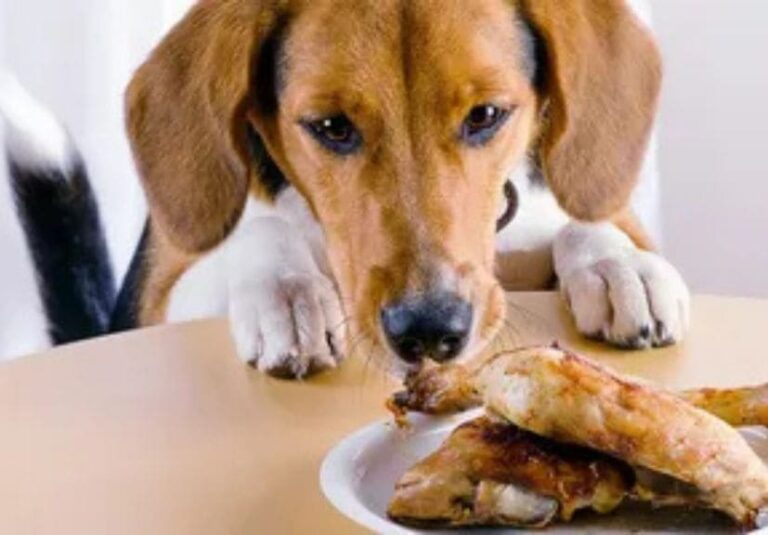Hey there, fellow dog lovers! Let’s talk about something every dog owner dreads — dog fights. If you’ve ever experienced two dogs lunging at each other, growling, and going at it like there’s no tomorrow, you know how nerve-wracking it can be. But here’s the thing: dogs don’t just fight for no reason. As someone who’s been around dogs for years, I can tell you, there’s always a trigger behind those tussles. Understanding why dogs fight each other is the first step to preventing it.
Let’s dive deep into this topic, canine conflict or why dogs fight each other, cover the common reasons they get into fights, and figure out how to keep the peace in your household or at the dog park.
Why Do Dogs Fight Each Other?
Canines are complex creatures. Sometimes they’re sweet and playful, and other times, things can get tense quickly. But why dogs fight each other? Well, most dog fights are caused by one or more of these common factors:
Territorial Behavior
You’ve probably noticed your dog getting a little possessive of their favorite spot on the couch or the backyard. According to VCA Hospital, that’s territorial behavior, which is the normal part of every dog’s life. It’s natural for dogs to feel the need to protect their space. If another dog invades what they see as “their” area, fights can break out.
Dogs can be pretty intense when it comes to defending their territory, whether it’s the yard, the living room, or even their favorite human. You might see your dog stiffen up, growl, or even lunge at another dog if they feel like their space is being threatened. This territorial aggression is something that dog owners need to be aware of, especially in multi-dog households.
Resource Guarding
Does your dog get snippy if another pup comes near their food bowl or toy? That’s what we call resource guarding. Many fights start because dogs feel the need to guard their resources — food, toys, and even your attention can become a source of conflict.
Not all dogs resource-guard, but for those that do, it’s serious business. You might notice your dog becoming stiff, growling, or snapping when another dog gets too close to their prized possession. Even something as simple as a tennis ball can turn a peaceful play session into a full-blown dog fight.
Social Hierarchy
Dogs are pack animals by nature, and with that comes a clear sense of social hierarchy. This hierarchy can be a source of tension in households with more than one dog or when dogs meet in a social setting like a dog park.
Sometimes, dogs fight because they’re trying to figure out who’s in charge. You might notice one dog trying to dominate the other by standing tall, making direct eye contact, or even pinning the other dog down. This is especially common when a new dog enters the home or group. Understanding that dogs have a pack mentality can help you manage these situations better.
Fear and Anxiety
Here’s something a lot of people don’t realize: a lot of dog fights happen because one or both dogs are scared. Fear-based aggression is a defense mechanism for dogs. If a dog feels threatened, they may lash out aggressively in an attempt to protect themselves.
It’s important to learn to spot the signs of fear or anxiety in dogs. If your dog’s tail is tucked between their legs, their ears are pinned back, or they seem unusually tense, they could be on the verge of a fight. A dog that’s feeling trapped or cornered might feel like fighting is their only option.
Poor Socialization
This is a big one, folks. Dogs that haven’t been properly socialized with other dogs can be more prone to fights. Socialization needs to start early — ideally when your dog is still a puppy — so they get used to being around other dogs and people.
Dogs that don’t know how to read the social cues of other dogs or those that have had bad experiences in the past may respond to unfamiliar dogs with aggression. Poorly socialized dogs may not understand the difference between play and a real threat, which can lead to unnecessary fights.
Redirected Aggression
Have you ever seen two dogs who weren’t even mad at each other suddenly get into a brawl? According to ASPCA, that’s often due to redirected aggression. When a dog is frustrated — maybe they can’t reach another dog on the other side of a fence or are overly excited — they might take it out on the dog closest to them.
This type of fight can be confusing because the dogs weren’t necessarily angry at each other, to begin with. But frustration can boil over into aggression, leading to an unexpected fight.
Understanding Dog Body Language
One of the best ways to prevent dog fights is to learn how to read your dog’s body language. Dogs are always communicating — we just need to know how to listen.
Signs of Aggression
Here are some clear signs that a dog might be ready to fight:
- Growling
- Raised hackles (the fur on their back stands up)
- Stiff body posture
- Direct eye contact
These are all red flags that things are about to go south. If you see these signs, it’s time to separate the dogs before a fight breaks out.
Play vs. Aggression
It’s also important to know the difference between rough play and actual aggression. Play fighting often involves dogs taking turns being on the top or bottom, using loose and bouncy body language, and occasionally pausing for a break.
If you’re unsure whether your dogs are just having fun or about to fight, watch their tails. A wagging tail usually means things are friendly, but a stiff, raised tail can indicate trouble.
How to Prevent Dog Fights?
Now that we know why dogs fight, let’s talk about how to stop it before it even starts.
Socialize Your Dog
One of the best ways to prevent dog fights is by socializing your dog early and often. Introduce your dog to other dogs in a controlled environment, whether it’s through puppy classes or dog playdates. The more comfortable your dog is around other dogs, the less likely they’ll be to fight.
Positive Reinforcement Training
I can’t stress this enough: positive reinforcement training is key. Teach your dog commands like “leave it” or “stay,” and reward them for calm, non-aggressive behavior. Dogs are more likely to listen when they know there’s something in it for them (like a tasty treat!).
Manage Resources
If your dogs tend to fight over food or toys, it’s important to manage these resources. Feed them separately if necessary and provide each dog with their own toys to avoid competition.
Avoid High-Stress Situations
Some dogs are just more prone to fighting in certain environments, like dog parks or when they’re on a leash. If you know your dog gets agitated in these situations, it’s best to avoid them or at least take extra precautions.
How to Safely Break Up a Dog Fight?
Even with all the prevention in the world, sometimes fights happen. But you’ve got to be careful here — breaking up a dog fight the wrong way can lead to injury for both you and the dogs.
What NOT to Do?
Never, and I mean never, try to break up a dog fight by putting your hands between the dogs. You’re likely to get bitten, even if your own dog wouldn’t normally bite you. In the heat of the moment, dogs can be unpredictable.
What to Do?
Instead, try using a loud noise to distract the dogs. Some people recommend an air horn, while others use a hose to spray water on the fighting dogs. You can also try throwing a blanket over them to disorient them long enough to separate them. Once the fight is over, give the dogs space to cool down. Don’t try to soothe them right away — they need time to decompress.
Conclusion
Dog fights are stressful, but understanding the causes behind them can help you prevent them. Whether it’s territorial behavior, resource guarding, or poor socialization, recognizing the triggers and addressing them early can make a huge difference. Remember to keep an eye on your dog’s body language, train them using positive reinforcement, and always stay calm when a fight does break out.
Got a dog who’s a little too aggressive? Don’t hesitate to reach out to a dog behaviorist. They’re experts in helping pups overcome their issues and can make a world of difference in ensuring your dogs get along. Visit a dog behaviorist to find and solutions and PetJazeera to learn about dogs!
Conclusion
Understanding why dogs fight is the first step to keeping them safe and preventing altercations. By implementing the tips mentioned above, like proper socialization, training, management techniques, and staying calm in tense situations, you can create a more peaceful environment for your dog and those around them. Remember, responsible dog ownership is critical to ensuring harmonious interactions and preventing fights. If you have any concerns about your dog’s behavior, don’t hesitate to seek professional help from a qualified trainer or behaviorist.
Do dogs bite while fighting with each other?
Dogs communicate with their teeth, and biting is a natural behavior used for dominance, defense, and even play. Depending on the severity of the fight, biting can range from a warning nip to a severe puncture wound.
Are certain breeds more prone to fights?
Yes, some breeds bred for guarding or herding might have a stronger guarding instinct, making them more likely to resource guard.
Will neutering stop my dog’s fights?
Neutering/spaying can help reduce aggression, but it’s not guaranteed. Consult a vet or behaviorist if needed.
How do I break up a dog fight? (Safety first!)
For minor fights, distract with noise/objects, use leash control if safe, or throw water. If major, call animal control!
My scared dog needs to be social. How can I help?
Start slow with safe introductions at a distance. Reward calm behavior and seek professional help for a personalized plan.
What can I do if my dog gets anxious around other dogs?
Use calming body language, mimic doggy calming signals, and gradually desensitize them to triggers with positive reinforcement.




